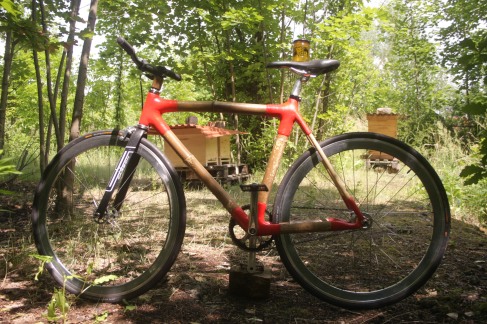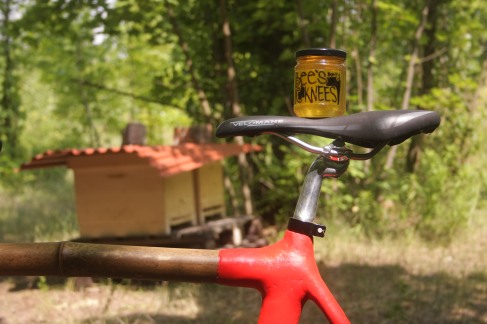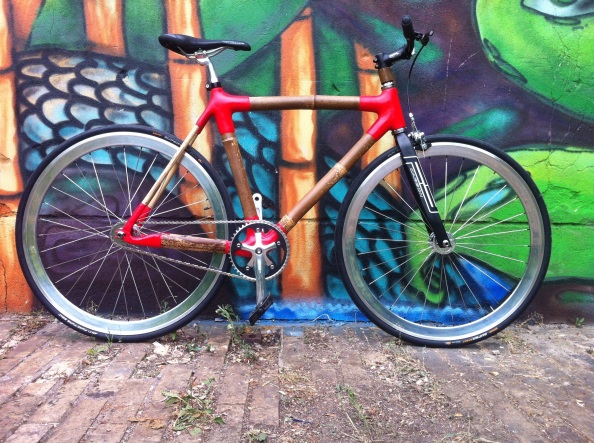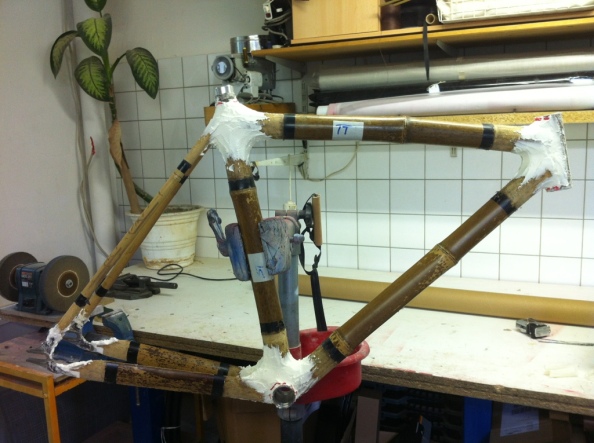Finally!
The frame is ready. The parts are here! Now, just need to do some assembly work and sell my old bike!
The manufacturing process was completely new to me and there’s would be a lot to learn. However, I think I got the hang of it.
So the basics of building a bike are here:
Step #1
Choose the right frame geometry. For me this was simple. As I already have a MTB and a road bike I wanted to have something fast, smooth and simple. So my choise was a fixed gear track bike for city cruising and commuting.
One can successfully use basically any frame geometry. My frame is based on a certain track bike with slight alterations.
Step #2
Choose the frame material carbon-fiber, steel, aluminium or bamboo.
Every material has its own characters. Pros and cons. Titanium and carbon-fiber are superlight and stiff. They are also super expensive and I would imagine that you would have to have special tools for them. Steel, on the other hand, is to some extend easy to work with and it is cheap. I’m not the most experienced welder, but I could imagine I could have pulled it off. The down sides of steel are that it is quite heavy and surprisingy flexible. Aluminium is like steel only lighter and harder to handle.
To my complete surprise bamboo is the easiest material to work with. One would still need to be working accurately and carefully but other than drilling, sawing, glueing, and sanding there are no special skills/tools required. Of course, some techniques are better than others but in the end it is quite simple. Especially when compared to other materials mentioned above.
Step #3
The actual building process.
After planning there’s the actual building process. Sawing the bamboo rods to correct length, preparing the joints, sanding, glueing, sanding more, finishing, painting, clear coating. Simple, right.
Step #4
Accuire the other parts
Purchase new or second hand, rent, get donations; whatever suits for you budjet. But absolutely no stealing!
For the most part, I purchased my parts from CNC Bikes but there’s a abundance of bike parts stores. [I want to comment that CNC has really good deals for Focus forks!] I wanted to get the parts from one store to get it hassle free. (Of course it wasn’t totally without problems, but they were courtesy of the delivery service and typos on my part.)
In this project I could not spend too much money on the parts so I had to compromise. It was a case of money over aesthetics. I can upgrade the parts along the way, when my financial situation gets better. Right now the most important thing is to get the bike on the road.
So here’s the list of the parts:
Syncros FR Factory Steuersatz Edelstahl 1 1/8″
Lenker NC-17 Freeride CC2 Freeride/XC Riser 25,4/640 mm schwarz
Focus Road Straight Vollcarbon Gabel 1 1/8″ UD
Salt BMX Bremshebel rechts einzeln schwarz
Velo O-Zone Race Sattel schwarz
CNC Bahn SB Fix/Free Laufradsatz /CN 424/CNC HP 600 silber
Selcof Aero Sattelstütze 27,2x230mm -Montagespuren-
CNC Touring Vorbau 25.4/115mm silber-poliert
NC-17 CR44-Kunststoff Pro Pedale schwarz
2 x Continental Cross Schlauch 28″ 25/35 SV 42mm unverpackt
2 x Continental Super Sport Plus 28-622 schwarz
Miche Primato Innenlager BSA 107 mm
Felt BMX Griffe schwarz
Zoom Ahead Vorbau 25,4mm/90 mm/7°
Shimano Tiagra BR-4600 Vorderradbremse einzeln
Sram PC-1 Nickel Singlespeed Kette
[And, yes, I’m still missing some parts and I got two vorbaus.]
Step #5 & #6
Assembly. Ride
As the parts are sitting in a cardboard box on my living room floor I have not much to say on these.
However, if your happen to do a workshop at Ozon. Don’t bring the greasy parts upstairs… 😉
-J.




















































